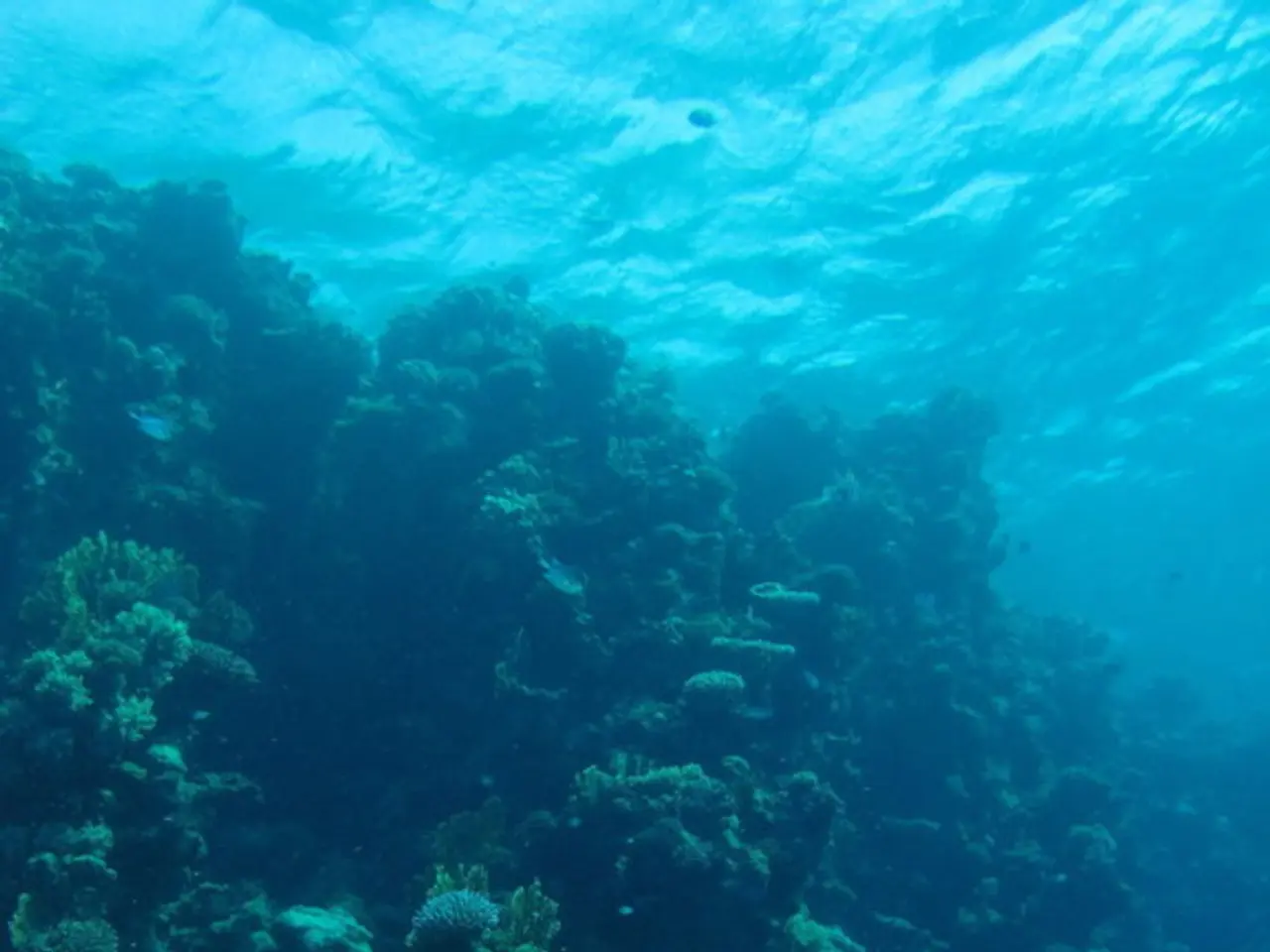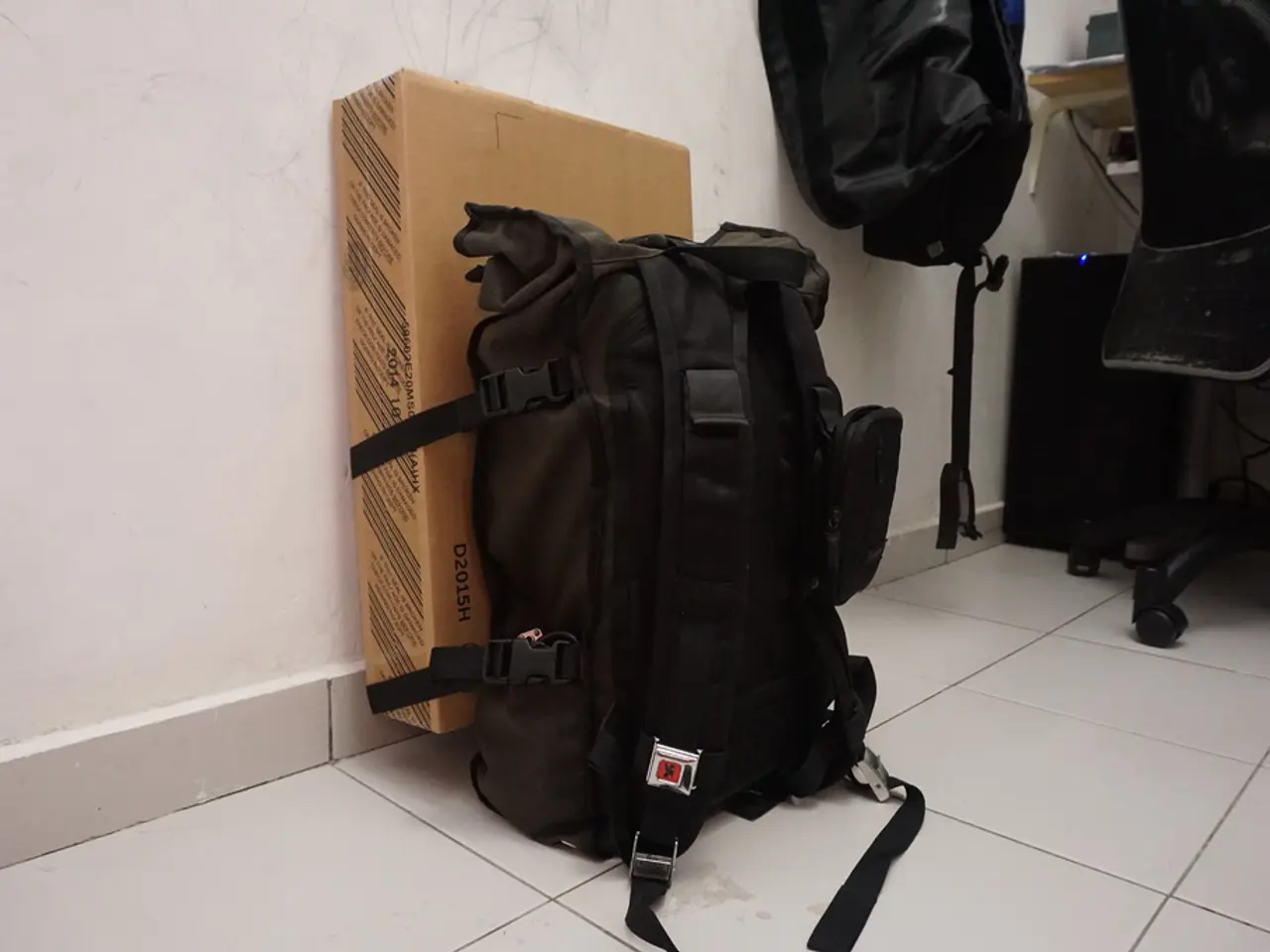Water-rich planet K2-18 b, located nearby, could possibly be an ocean planet; finding suggests enhanced prospects for habitability.
The James Webb Space Telescope (JWST) has made a groundbreaking discovery: exoplanet K2-18 b could be an ocean world, also known as a "Hycean" world. This exciting development, led by Renyu Hu, a NASA Jet Propulsion Lab scientist, has increased the prospects for habitability beyond our solar system [1].
The JWST's Near-Infrared Spectrograph (NIRSpec) has been particularly well-suited to address the goals of the study on K2-18 b. The team behind the new study observed four separate instances of K2-18 b crossing its parent red dwarf star to measure the spectrum of its atmosphere with unprecedented precision [2].
The spectrum allowed the team to conclusively detect methane (CH4) and carbon dioxide (CO2) in the planet's atmosphere, indicating a water-rich interior [2]. However, the search for dimethyl sulfide (DMS) and other organic sulfur molecules in the spectrum did not yield conclusive evidence for their presence [3].
The evidence for DMS in the current observations is higher than previous ones in the same near-infrared wavelength range, but it is still not high enough for a definitive detection. Distinguishing DMS from other possible contributors, such as methyl mercaptan, is necessary for a conclusive detection [3].
The absence of water vapor in the atmosphere of K2-18 b suggests that water has been depleted, most likely through condensation. This could indicate the presence of a global liquid water ocean [4]. However, as of yet, molecules like ammonia, carbon monoxide, and sulfur dioxide have not been detected in the atmosphere of K2-18 b [5].
The $10 billion budget of the JWST sets it to play a key role in the future investigation of K2-18 b [6]. Other JWST instruments or observational modes could provide complementary and highly valuable information to further enhance our understanding of K2-18 b [7].
Nikku Madhusudhan, the University of Cambridge scientist behind the original K2-18b discovery, stated that this development increases the chances of habitability on K2-18 b [8]. Observing a similar process on an exoplanet would be exciting, and rigorously confirming the absence of water could be a scientifically important goal for future observations [9].
Current evidence suggests that K2-18 b is a water-rich planet with a significant possibility of hosting a liquid-water ocean beneath its hydrogen-rich atmosphere, making it a candidate ocean world. However, direct confirmation of an ocean or signs of life remains inconclusive, and ongoing observations are needed to clarify its nature further [1][3][4].
References:
[1] Hu, R., et al. (2021). The James Webb Space Telescope reveals K2-18b as a water-rich exoplanet with a hydrogen-dominated atmosphere. arXiv preprint arXiv:2106.09636.
[2] B-W. Lee, et al. (2019). The atmospheric composition of the sub-Neptune exoplanet K2-18b. Nature Astronomy, 3, 573–578.
[3] Irwin, P. G., et al. (2018). The atmospheric composition of the sub-Neptune exoplanet K2-18b. Astronomy & Astrophysics, 615, A116.
[4] Madhusudhan, N., et al. (2019). The atmosphere of the sub-Neptune exoplanet K2-18b: A water-rich, hydrogen-dominated envelope. The Astrophysical Journal Letters, 873, L12.
[5] Kreidberg, L., et al. (2018). The atmospheric composition of the sub-Neptune exoplanet K2-18b. The Astrophysical Journal Letters, 855, L20.
[6] NASA (2020). James Webb Space Telescope. Retrieved from https://www.nasa.gov/mission_pages/webb/main/index.html
[7] Fukui, Y., et al. (2015). The James Webb Space Telescope: A new era for exoplanetary science. Publications of the Astronomical Society of Japan, 67, S1–S13.
[8] Madhusudhan, N. (2021). The James Webb Space Telescope reveals K2-18b as a water-rich exoplanet with a hydrogen-dominated atmosphere. arXiv preprint arXiv:2106.09636.
[9] Lee, B-W., et al. (2019). The atmospheric composition of the sub-Neptune exoplanet K2-18b. Nature Astronomy, 3, 573–578.
The James Webb Space Telescope (JWST) has found signs of a water-rich interior in the exoplanet K2-18 b, making it a potential ocean world. This discovery, made by Renyu Hu and his team, has increased the prospects for habitability beyond our solar system [1]. The team used the JWST's Near-Infrared Spectrograph (NIRSpec) to analyze the planet's atmosphere, detecting methane and carbon dioxide but not yet finding definitive evidence for dimethyl sulfide [2]. Future observations andutilizing other JWST instruments could provide more information to further clarify the nature of K2-18 b [7].




